|
0 Comments
Nothing never ends the way I imagine it: paintings, stories, plays. And that's the fun of it all--the discovery. What you see and learn along the way about the world and yourself and your place in the world. If that doesn't happen, I get bored and stop. (It's the reason I quit acting and starting writing plays and making theater instead; I stopped learning about the world and myself from acting.) I had an idea for this painting and started it and the painting pretty much said, nope, I don't want to do that, I want to do this. It is exactly like listening to the characters as you write a story. And you can pretty much hear the clunking sound every time when a writer inflicts themselves into the story, where everything goes flat and you're removed from the world of the story. By listening to your painting you become a better painter. With the painting there is a teacher/student relationship. Don't ever think you know more about painting than the painting. And if I could explain it in all words I wouldn't have painted it. I think more than usual, people are waking up today looking back on the year in absolute awe. How did we make it? I turned 65 this year, and it surprised me to no end. How did I get this far? How did I survive this long? You feel thankful, and a bit apprehensive, noting the ages of people who died this year and calculating how many more years that would have been for me, that's me dead in five years, that's in three years, God love them, if I were that person I'd live twenty-five more years. Let's not forget the knee surgery I had that has both humbled and humiliated me. For the first time in our lives my wife has to walk more slowly so I can keep up. Talk about feeling like an old dog. But it makes you also feel even more grateful for being alive. Every bit of work I had lined up, every bit of ground that I laid in 2019 in order to make money or advance my art....gone, in a matter of a day. My first solo show, cancelled. All my commercial work, dried up. Theater? Gone, but even though one of my plays was a semi-finalist at the Eugene O'Neill Theater Festival this year, I really haven't made any theater since late summer 2017 anyway. And it makes me grateful, maybe, for the pandemic, odd as that sounds because I finally started doing studio art again, something I've been wanting to do for a very long time. I mean, I would be making theater, my own theater--living the dream!--and I'd be thinking of paint-splattered hands and palette knives. I love working with palette knives; like painting with ice skates. I found theater so constrictive, the artists are constrained in their disciplines. Yeah a playwright might also act, and maybe even direct, but it's rare. And you'd never see, for example, something as weird as a playwright/set designer or a light designer/actor. They just don't think in terms of mulitdisciplinary work. It's as if they've never heard of installation art, and I think that pretty much sums up how I approach theater, as one giant installation. (Imagine telling an installation artist they can't design and build the installation, light it, write and record the soundscape.) And when death and despair is all around you, everywhere in the news, and Trump and his loyalists are set on destroying civilization, what else to do but create? I keep saying, you can't keep a creative person down. So, since about April, I think I've single-handedly kept Blick from going bankrupt. With the nice weather we had this spring, I worked on an old table on the front porch, and when the weather got bad, I commandeered the kitchen table. Sue has been wonderful and understanding. If I have a painting going, we'll now eat Japanese-style, on our knees, at the coffee table in the middle room. And while I wish I had studio space where I could work bigger and could use spray paint, well, you have to always look on the bright side and working in the kitchen means you're next to the refrigerator and the coffee pot. What does all of this mean? What is that question even asking? Always looking for meaning. Right now I'm happy just to be playing. Artists should always go out of their comfort zone, and I'm certainly doing that. Artists should push themselves and I'm certainly doing that, too. Ten years ago I was in grad school and after that it was the fat years of forming theater companies, being supported by grants, getting residencies. I doubt painting will lead me to comparable heights (you do note the sarcasm, right?) and I'm glad for that. I've always been able to write (and photograph). Painting is something I'm doing with very little experience, without a very much hope of success, except maybe of course my own happiness. And I think my lack of training is an asset. I'm training myself not to get depressed when I look at the low number of followers I have on Instagram, or when I get only a handful of likes. Something that killed theater for me was how commercial it all got, worrying about ticket sales and clicks and insurance. If I don't get a lot of followers, a lot of likes, it lets me work quietly, by myself, without any noise. No noise. That's what happens when I paint. It blots out the noise. This is how it starts. This is what the first hours into a painting look like. I have an idea, but I don't know how to get there. So I just...do anything. Today I laid down some lines, in charcoal and pencil, using carpenter tools. And then I started laying down a base, but didn't like it, so got out the old trusty palette knives and started scraping and shoving. And it started to get there but my lack of talent and experience makes the going slow. But today I learned a lot. A lot of what might be the beginning of a JGF painting (just like my friends like to refer to a JGF play or story, filled with oddball characters and weird twists and turns of the plot, and death, lots and lots of death.) I think that's all I want for now: I just want to be left alone so I can get better at painting and discover what a JGF painting is.
From the galleries' site: "This exhibition is an open call for postcard-sized responses to the COVID-19 pandemic. All submissions will be included in the exhibition and become part of the Wheaton College Permanent Collection. The exhibition is an effort to combat the social isolation this virus has forced on us. It is a chance to see, through the eyes of another, an expression of this experience. It is an opportunity to come together when we still have to remain physically apart." I was fortunate to be invited to submit to this show. They requested pieces no bigger than 5" x 7" (postcards!) of the work you've been doing during the pandemic. The postcards will become part of Wheaton College's permanent collection. While the exhibition emphasizes the results, the expressions, of artists' response to the pandemic, for me the process of getting there was just as important. At the start of the pandemic and the subsequent quarantine I, like many people I know, were able to look ahead and see that for scientific and political reasons, what was just beginning would be with us for a very long time. With that understanding I settled in for the long haul and took the opportunity to begin something that I had been dreaming of doing for quite a while: Go back into the studio (though in my case the studio is a table in the sun on my porch during good weather, or my kitchen table lined with old cardboard when it's not.) I will admit that for years I was frozen by a very silly but real fear of failure from attempting this, but the pandemic with its sights set directly on our mortality quickly overrode my fear. It was now or never. If ever I were to start drawing and painting--no! check that, for it was the classical definitions of drawing and painting and art that had frightened and deterred me as much as the embarrassment I thought I'd feel from friends who are very accomplished artists-- if I were going to start making art pieces--what I define as something that didn't exist yesterday--then now was the time to do it. I've always defined myself as a writer and an artist, and being an artist I would then say, I am an artist who primarily makes images (photography) or I am an artist who works in the theater. But the artist part always came first. I'm seeing on Facebook that a lot of my peers in the theater seem to be suffering more than others during the disturbances brought on by the pandemic because theater is all they know how to do. They write, it--acting, directing, scenic design, whatever the discipline--is something they trained their whole life for and now that the theaters are shut down they don't know what to do. As much as I love theater--and I do love it deeply and I did study it and paid a lot of money to a university to learn about it and devoted a lot of my life to it--the artist in me always found it restrictive because, if you were a playwright like I am, you really are not only not expected to be able to design a set, you're pretty much denied it. With any other artistic pursuit there's not just the expectation but almost a requirement that you'll explore other mediums. When funding for my theater went away, admittedly I was disappointed at first, but then shrugged and figured out something else to do. You really can't keep a creative person down; they will always find an outlet. As much as I love making theater, and as much as I love making images, right now I'm loving smearing and scratching and spreading paint. Like Hemingway tried to write one perfect sentence in a day, right now I'm just trying to make one perfect mark. You can love all of your children, you don't have to have a favorite. I'm not going to get into the steps of how I reentered the studio, how I replicated my old palette, bought former favorite art supplies like an enamel butcher pan or a collection of palette knives whose handles are already getting worn and paint-spattered. What became most important to me was suddenly how free I felt to do whatever I wanted, regardless of what the established art community might think. Don't even ask me what the "established art community" is or who composes it. I imagine in my mind they're all the gallerists and curators who'll I'll bump heads with later when I try to exhibit or sell some of this stuff. I used, and continue to use, tools I dug out of my toolbox like plumb lines, squares, and carpentry pencils. Right now some favorite tools are scrapers for stenciling I found on a pegboard in the painting department of a Home Depot. I use an old mat knife to scrape children's blackboard chalk to make dust, and transfer paper, i.e. good old-fashioned carbon paper. In other words I'll use anything or do anything to get marks on paper (and while today it's paper, who knows what it might be tomorrow!) I addressed and continue to address whatever is in front of me. A loved one. A favorite painting (can you spot the Hockney somewhere on this site?) The pandemic. And while I'm still taking baby steps, I'm growing every day, developing a painting language and an eye and through that growth I'm still very much aware that I'm alive, which is a good thing to be during a pandemic. Here are the pieces I submitted: 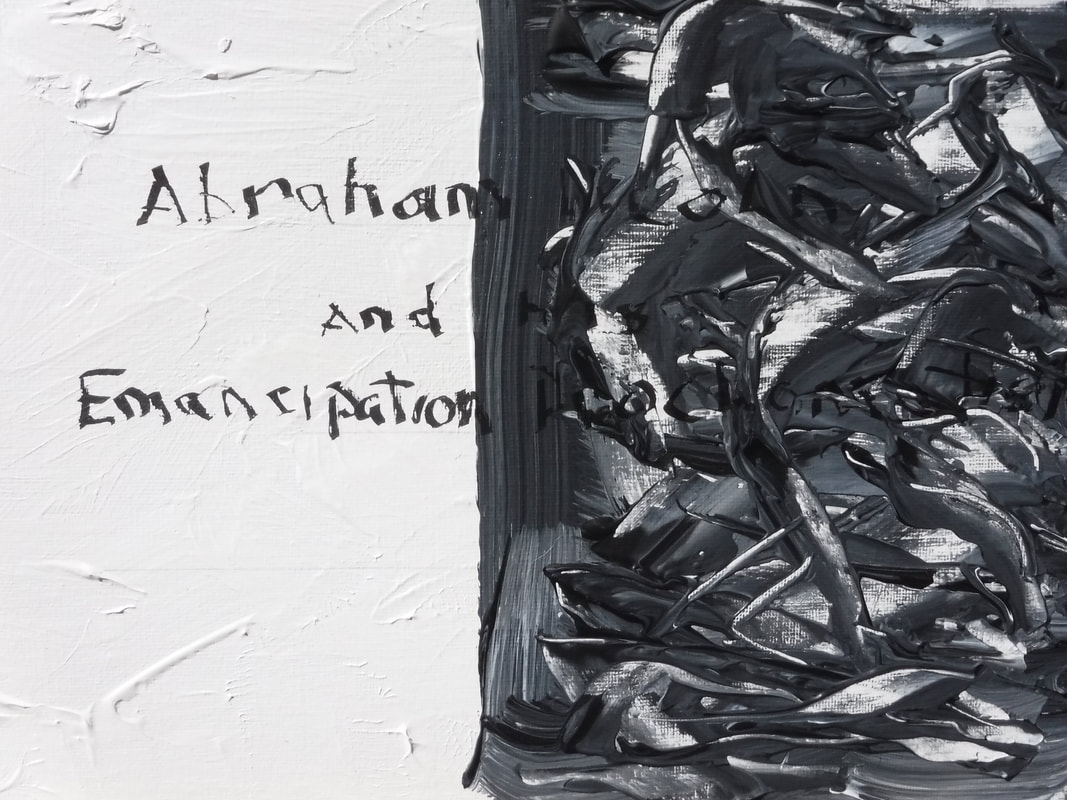 Abraham Lincoln and his Emancipation Proclamation. Acrylic and pen on board. 9” x 12”. 2020. Abraham Lincoln And His Emancipation Proclamation came out of the #BLM movement that erupted during the pandemic. For whites, Lincoln’s proclamation is easy to see; for Blacks, it gets hidden in their struggle. |
Author
John Greiner-Ferris is a politically motivated, multi-disciplinary artist in the Boston area. Sometimes he makes images. Sometimes he writes. Sometimes he does both. Archives
May 2024
Categories
All
|
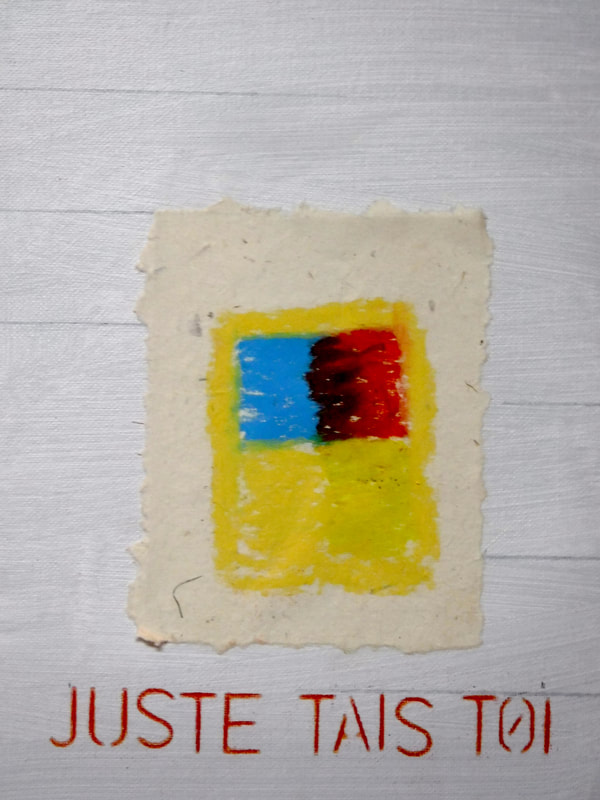
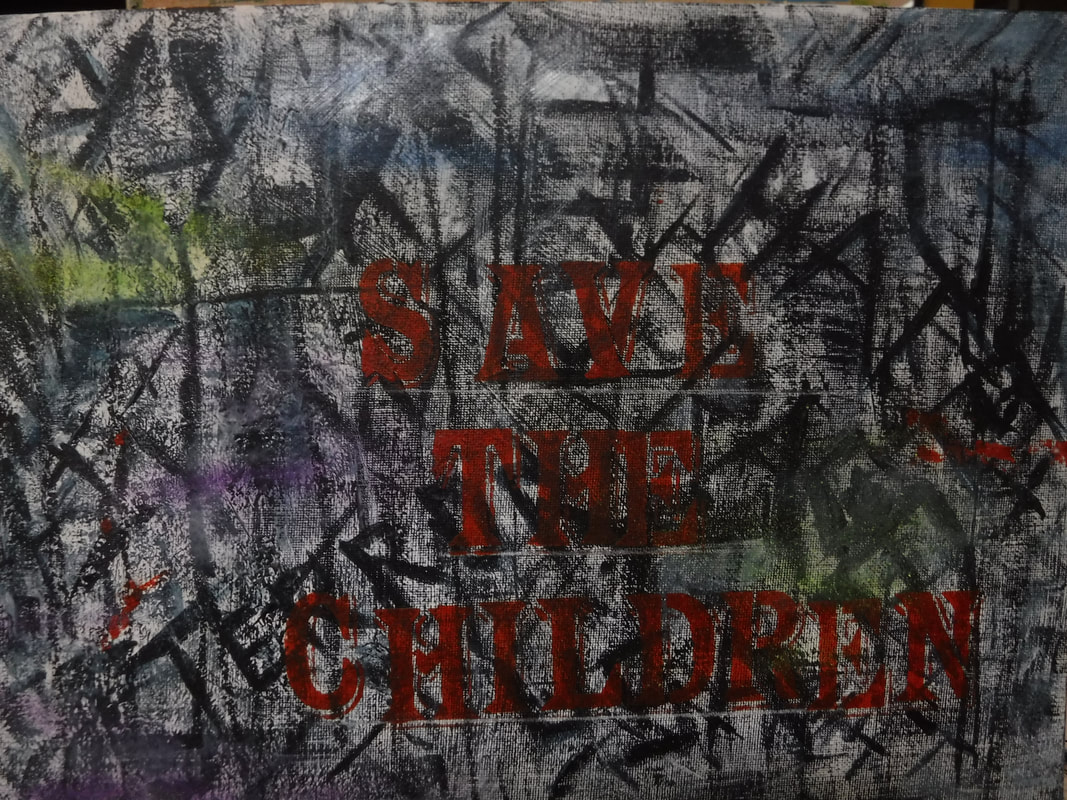
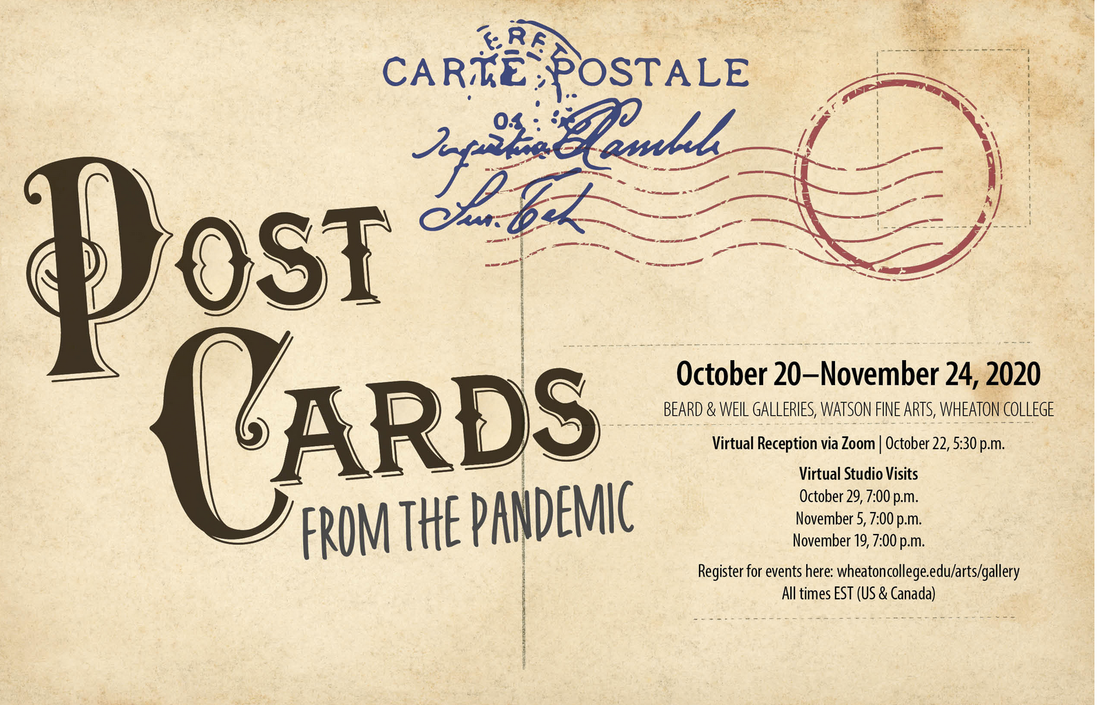
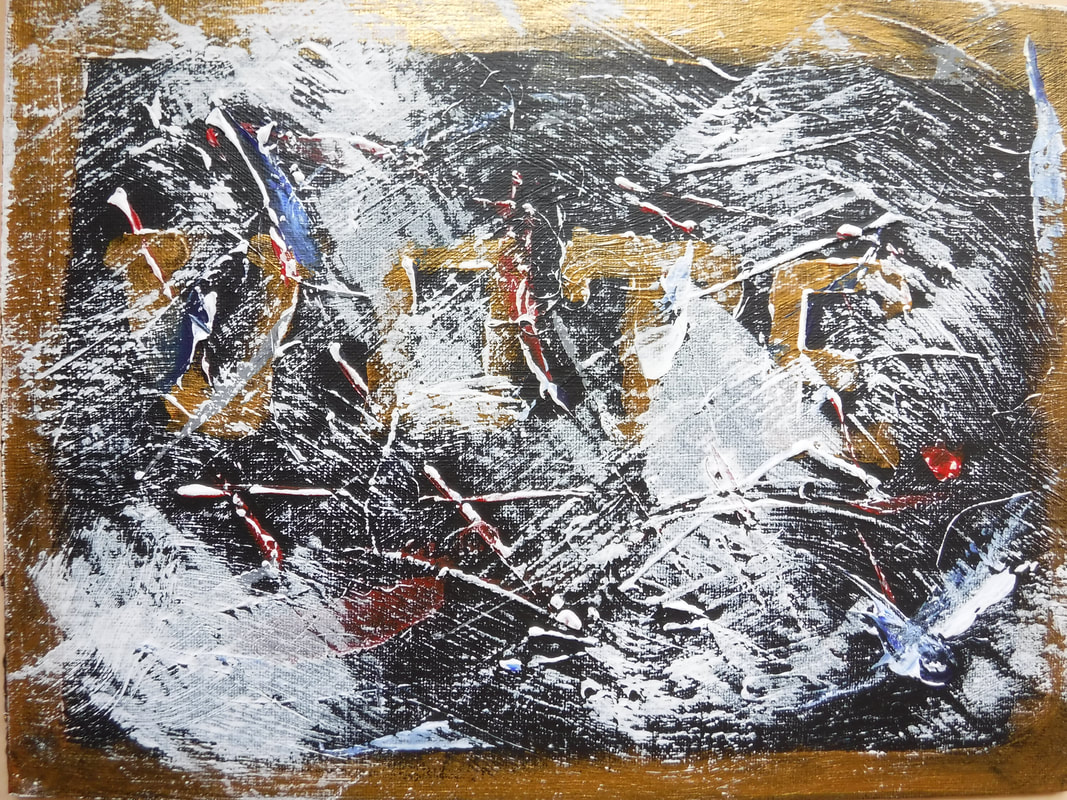
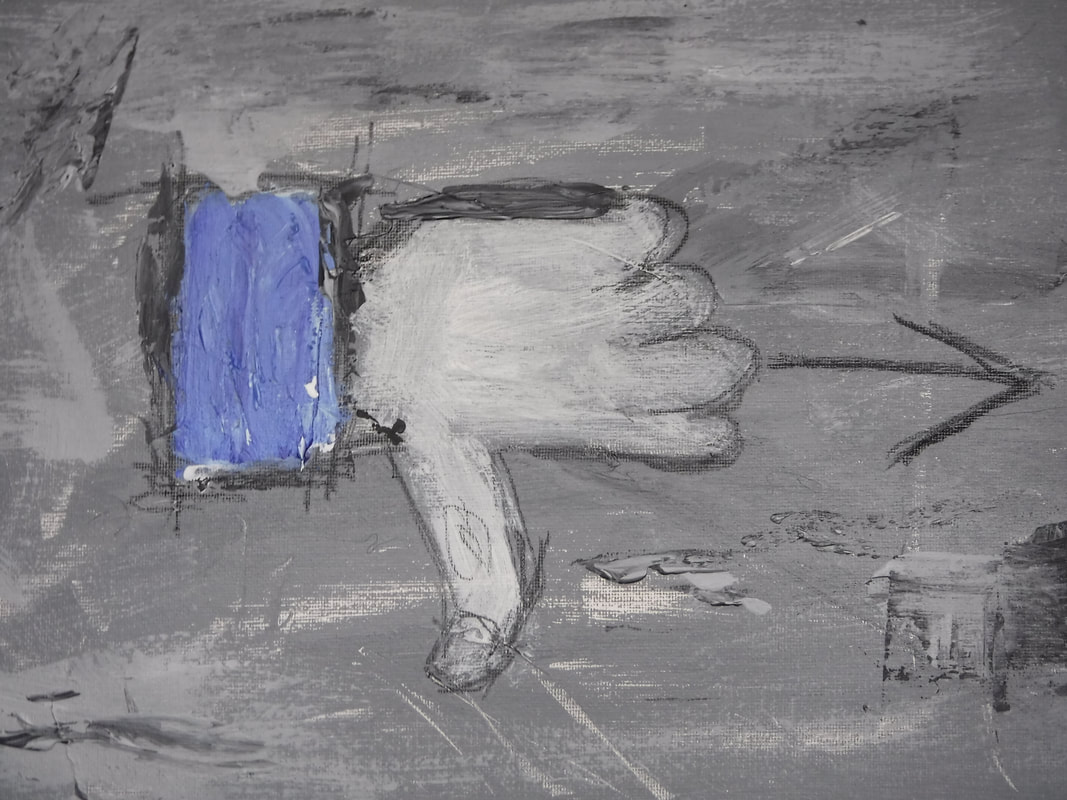
 RSS Feed
RSS Feed
